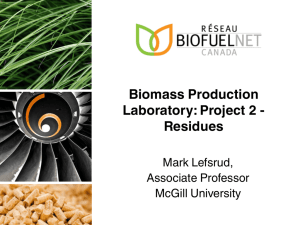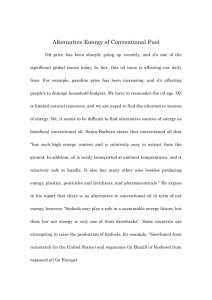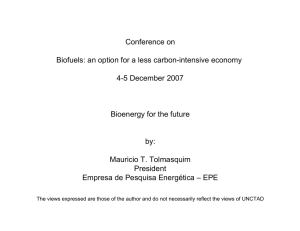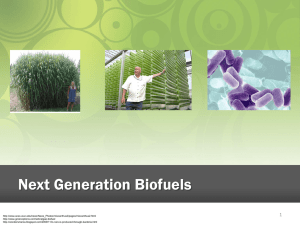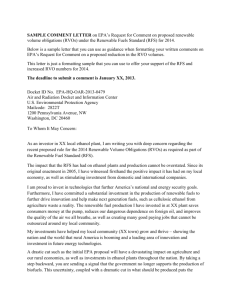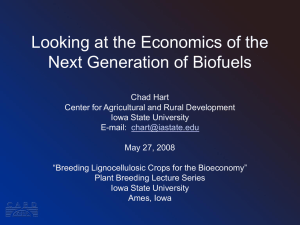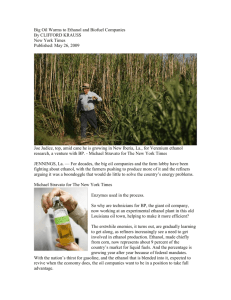594-1722-1-PB - SMARTech - Georgia Institute of Technology
advertisement
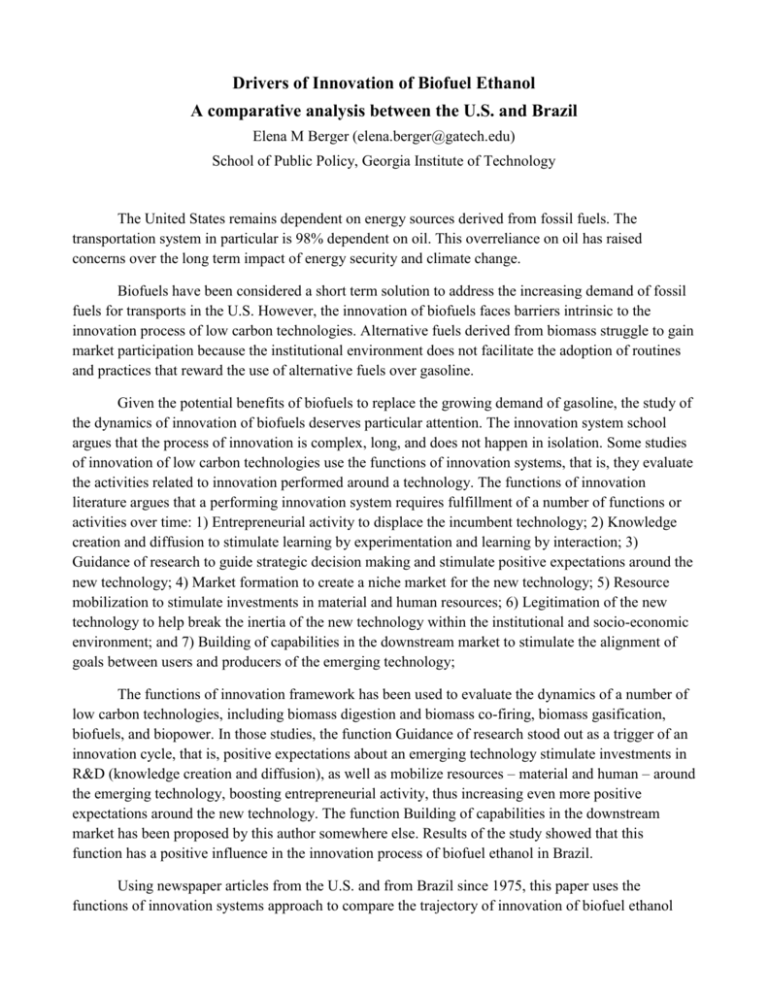
Drivers of Innovation of Biofuel Ethanol A comparative analysis between the U.S. and Brazil Elena M Berger (elena.berger@gatech.edu) School of Public Policy, Georgia Institute of Technology The United States remains dependent on energy sources derived from fossil fuels. The transportation system in particular is 98% dependent on oil. This overreliance on oil has raised concerns over the long term impact of energy security and climate change. Biofuels have been considered a short term solution to address the increasing demand of fossil fuels for transports in the U.S. However, the innovation of biofuels faces barriers intrinsic to the innovation process of low carbon technologies. Alternative fuels derived from biomass struggle to gain market participation because the institutional environment does not facilitate the adoption of routines and practices that reward the use of alternative fuels over gasoline. Given the potential benefits of biofuels to replace the growing demand of gasoline, the study of the dynamics of innovation of biofuels deserves particular attention. The innovation system school argues that the process of innovation is complex, long, and does not happen in isolation. Some studies of innovation of low carbon technologies use the functions of innovation systems, that is, they evaluate the activities related to innovation performed around a technology. The functions of innovation literature argues that a performing innovation system requires fulfillment of a number of functions or activities over time: 1) Entrepreneurial activity to displace the incumbent technology; 2) Knowledge creation and diffusion to stimulate learning by experimentation and learning by interaction; 3) Guidance of research to guide strategic decision making and stimulate positive expectations around the new technology; 4) Market formation to create a niche market for the new technology; 5) Resource mobilization to stimulate investments in material and human resources; 6) Legitimation of the new technology to help break the inertia of the new technology within the institutional and socio-economic environment; and 7) Building of capabilities in the downstream market to stimulate the alignment of goals between users and producers of the emerging technology; The functions of innovation framework has been used to evaluate the dynamics of a number of low carbon technologies, including biomass digestion and biomass co-firing, biomass gasification, biofuels, and biopower. In those studies, the function Guidance of research stood out as a trigger of an innovation cycle, that is, positive expectations about an emerging technology stimulate investments in R&D (knowledge creation and diffusion), as well as mobilize resources – material and human – around the emerging technology, boosting entrepreneurial activity, thus increasing even more positive expectations around the new technology. The function Building of capabilities in the downstream market has been proposed by this author somewhere else. Results of the study showed that this function has a positive influence in the innovation process of biofuel ethanol in Brazil. Using newspaper articles from the U.S. and from Brazil since 1975, this paper uses the functions of innovation systems approach to compare the trajectory of innovation of biofuel ethanol between the U.S. and Brazil during the last thirty years. It will show results for all functions, but it will give special emphasis to the functions Guidance of research and Building of capabilities in the downstream market. The functions of innovation is an evolutionary framework that can only be tested by a sequence of causal relationships with self-reinforcing mechanisms. In this way, explanations are derived from patterns of positive or negative feedback. By plotting the evolution of functions of innovation over time, one can identify the most relevant functions. The research uses the New York Times and the Washington Post as sources of newspaper articles for the United States, and uses O Estado de Sao Paulo as a source of newspaper article for Brazil. All three sources were searched from 1975 until 2008. It is assumed that every newspaper article represents an empirical observation of an event. The methodology follows the steps: 1) Bibliographic research into databases to find electronic versions of newspaper articles covering the innovation of biofuel ethanol in the U.S. and in Brazil between 1975 and 2008. Manual search into archives for the early period when necessary; 2) Coding of newspaper articles (empirical representation of events) according to the functions of innovation; 3) Data analysis and plotting; 4) Interview with specialists to complement data from newspaper articles; 5) Process analysis to develop a narrative story line for the U.S. and Brazil using a chronological sequence of events between 1975 and 2008; 6) Comparative analysis: using the functions of innovation to trace the trajectory of innovation of biofuel ethanol in the U.S. and Brazil. The paper will draw conclusions from the analysis and discuss the policy implications for the development of biofuels in the U.S. Bibliography Berger, Elena (2010). Dynamics of Innovation of Biofuel Ethanol. Three decades of experience in the U.S. and in Brazil. Doctoral Dissertation. Georgia Institute of Technology. Atlanta, GA, U.S. Bergek, A., Jacobsson, S., Carlsson, B., Lindmark, S., & Rickne, A. (2008). Analyzing the functional dynamics of technological innovation systems: A scheme of analysis. Research Policy, 37(3), 407-429. Brown, M., Chandler, J., Lapsa, M., & Sovacool, B. (2007). Carbon Lock-In: Barriers to Deploying Climate Change Mitigation Technologies: Oak Ridge National Laboratory. Foxon, T., & Pearson, P. (2008). Overcoming barriers to innovation and diffusion of cleaner technologies: some features of a sustainable innovation policy regime. Journal of Cleaner Production, 16, S148-S161. Hekkert, M. P., & Negro, S. O. (2009). Functions of innovation systems as a framework to understand sustainable technological change: Empirical evidence for earlier claims. Technological Forecasting and Social Change, 76(4), 584594.
